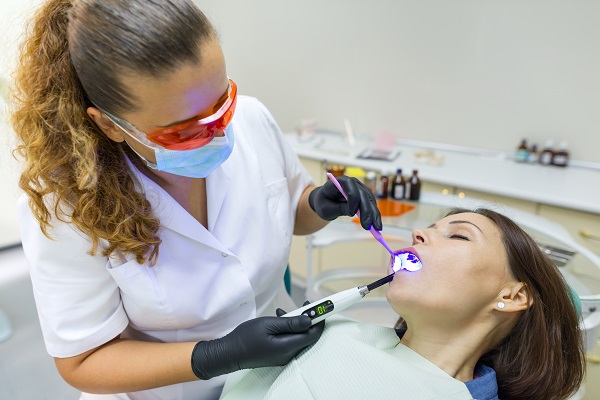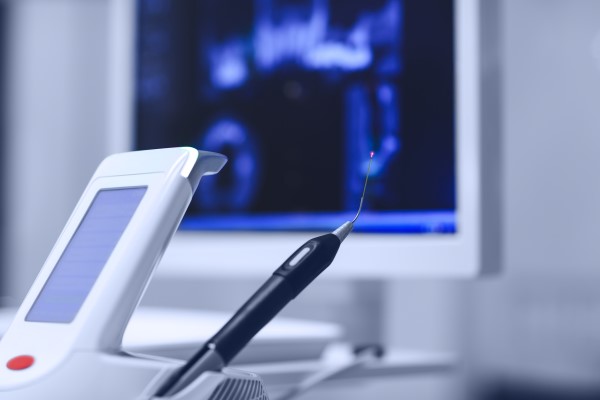FAQ About Sedation Dentistry

Sedation dentistry is for anyone who gets anxious when it is time to go to the dentist. The condition is called dental anxiety and it affects millions of people in the U.S.
There is a multitude of reasons why a person might develop a fear of dentists. It can be caused by a traumatic past experience, a fear of pain, a fear of the tools used by dentists or a fear of being crowded by a dentist and their assistants as they perform dental work. Thankfully, sedation dentistry is a simple way to reduce, if not eliminate dental anxiety.
Frequently asked questions about sedation dentistry
Thinking about giving sedation dentistry a try? Below are the answers to some of the questions you might have.
Q. How will I feel during my treatment?
Most patients do not feel anything during treatments with dental sedatives. There is little to no discomfort and patients feel relaxed during their treatment. Sedation dentistry typically leaves patients feeling relaxed and at ease.
Q. Will I be conscious during my treatment?
Yes. Most of the sedatives that are used keep patients responsive and conscious during their treatment. These medications simply put you in a more relaxed state.
Q. How safe is sedation dentistry?
Sedation dentistry is safe for most patients young and old alike. Before administering the sedatives, the dentist will go over the patient's medical history and any medications they are currently taking to reduce the risk of negative reactions.
Q. How long does it take for dental sedatives to wear off?
It depends on the type of sedatives being used and how quickly the patient's body breaks down the active compounds. Nitrous oxide, which is commonly known as laughing gas is one of the most used dental sedatives and it wears off within minutes. Oral sedatives take longer to leave the patient's system and the effects can be felt for a couple of hours after treatment.
Q. Who needs sedation dentistry?
Anyone who experiences dental anxiety is a good candidate for sedation dentistry. Signs that you might be a good candidate for sedatives include the following:
- An extreme fear of going to the dentist
- Fear of injections or pain
- A traumatic past experience during dental treatments
- Sensitivity to the noises and smells at the dentist's clinic
- An overactive gag reflex
- Feeling ashamed about the condition of your teeth
- Wanting dental experiences to be more comfortable
Q. What are the common types of sedatives used in dentistry?
There is a range of sedatives used to deal with dental anxiety. The more common types of sedatives used include the following:
- Inhaled sedation: This involves delivering laughing gas, which is medically known as nitrous oxide. It is administered via a nose mask. The medication makes patients feel happy and relaxed. They might even have a few outbursts of laughter when under the influence of nitrous oxide, which is why it is also known as laughing gas.
- Oral sedation: These pills are taken prior to the appointment and they help to prevent the jitters that occur before getting to the dentist.
- IV sedation: These sedatives are delivered intravenously. It is typically used for patients with severe dental anxiety or for those who are undergoing a more advanced procedure.
Put dental phobia behind you
Call or visit our San Clemente clinic to learn more about sedation dentistry and how it can be used to deal with dental anxiety.
Request an appointment here: https://dentistinsanclemente.com or call Nina Basti DDS at (949) 201-4719 for an appointment in our San Clemente office.
Check out what others are saying about our dental services on Yelp: Sedation Dentistry in San Clemente, CA.
Recent Posts
Dental fillings typically last between 10 and 12 years before they are more vulnerable to coming loose and requiring special dental care to be repaired. This review discusses how a dentist can treat a loose dental filling, along with insights into how long you can expect filings to last, the signs of a loose dental…
Having a cavity is no fun, but luckily there are options like laser dentistry that can make treatment much more effective than the traditional cleaning and filling that we’re used to. We all want to pick the best option possible for getting the right dental treatment. To help you understand how laser cavity treatment can…
General dentistry consists of a lot of routine oral health care, which also happens to include restoring teeth that are in bad shape due to damage. Common damage may include cracks, chips, or cavities, all of which can be addressed with the help of different dental restorations. Continue reading to find out what dental restoration…
If you have issues with your dentures, your dentist might recommend a denture reline. You do not know what a reline is, though. Before you agree to a procedure, you want to know the details. Find out more about a denture reline so you will understand why it is necessary.Dentures are fabricated based on impressions…


